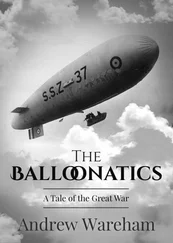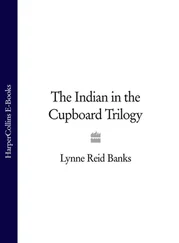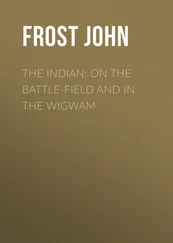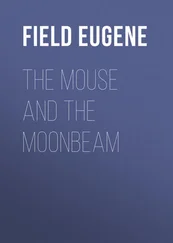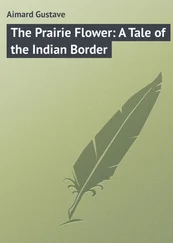Eugene Ware - The Indian War of 1864
Здесь есть возможность читать онлайн «Eugene Ware - The Indian War of 1864» весь текст электронной книги совершенно бесплатно (целиком полную версию без сокращений). В некоторых случаях можно слушать аудио, скачать через торрент в формате fb2 и присутствует краткое содержание. Жанр: Историческая проза, на английском языке. Описание произведения, (предисловие) а так же отзывы посетителей доступны на портале библиотеки ЛибКат.
- Название:The Indian War of 1864
- Автор:
- Жанр:
- Год:неизвестен
- ISBN:нет данных
- Рейтинг книги:3 / 5. Голосов: 1
-
Избранное:Добавить в избранное
- Отзывы:
-
Ваша оценка:
- 60
- 1
- 2
- 3
- 4
- 5
The Indian War of 1864: краткое содержание, описание и аннотация
Предлагаем к чтению аннотацию, описание, краткое содержание или предисловие (зависит от того, что написал сам автор книги «The Indian War of 1864»). Если вы не нашли необходимую информацию о книге — напишите в комментариях, мы постараемся отыскать её.
The Indian War of 1864 — читать онлайн бесплатно полную книгу (весь текст) целиком
Ниже представлен текст книги, разбитый по страницам. Система сохранения места последней прочитанной страницы, позволяет с удобством читать онлайн бесплатно книгу «The Indian War of 1864», без необходимости каждый раз заново искать на чём Вы остановились. Поставьте закладку, и сможете в любой момент перейти на страницу, на которой закончили чтение.
Интервал:
Закладка:
General Connor had the reputation of being the greatest Indian-fighter on the continent, and he had been requested to look over the situation by General Curtis, commanding the department, and pass his opinion as to what ought to be done with the Cheyennes and Arapahoes, and how best to do it. General Connor passed on down the road, it was stated, along in December, past our fort, incognito.
In my memorandum I have the following as being the companies and posts of each of these districts and subdistricts as they existed on the 31st of December, 1864, as shown by the general orders of that period.
On December 31, 1864, the organization of troops was as follows:
DEPARTMENT OF KANSAS.
Commanded by Major-General Samuel R. Curtis.
Headquarters at Fort Leavenworth, Kansas.
The Department was composed of the following districts:
District of South Kansas, Headquarters at Paola, Kansas.
District of North Kansas, Headquarters at Fort Leavenworth, Kansas.
District of the Upper Arkansas, Headquarters at Fort Riley, Kansas.
District of Nebraska, Headquarters at Omaha, Nebraska.
District of Colorado, Headquarters at Denver, Colorado.
The District of South Kansas was commanded by Major-General James G.
Blunt, with 42 officers and 998 men.
The District of North Kansas was commanded by Brigadier-General Thomas A.
Davies, with 30 officers and 530 men.
The District of the Upper Arkansas was commanded by Colonel James H. Ford,
with 24 officers and 803 men.
The District of Nebraska was commanded by Brigadier-General Robert B.
Mitchell, with 54 officers and 1,201 men.
The District of Colorado was commanded by Colonel John M. Chivington, with
19 officers and 297 men.
The foregoing does not represent the total number of each command, but
represents the number present, able for duty, and in the saddle on December
31, 1864. Of course there were many not "in the saddle."
The District of Nebraska was divided as follows:
East Sub-District, commanded by Colonel Robert R. Livingston. Headquarters,
Fort Kearney, Nebraska.
In this sub-district were the following posts and garrisons:
Fort Kearney: Five companies 1st Nebraska Cavalry.
Plum Creek: Three companies 1st Nebraska Cavalry.
Cottonwood Springs: Two companies 7th Iowa Cavalry and one company 1st
Nebraska Cavalry.
Columbus: One company 7th Iowa Cavalry.
Little Blue Station: One company 1st Nebraska Militia.
Mullala Station: One company 1st Nebraska Cavalry.
Dan Smith's Ranch: One company 7th Iowa Cavalry.
Gilman's Station: One company 1st Nebraska Cavalry.
O'Fallon's Bluffs: One company 7th Iowa Cavalry.
Alkali Station: One company 7th Iowa Cavalry.
Beauvais Station: One company 1st Nebraska Cavalry.
Julesburg: One company 7th Iowa Cavalry.
West sub-district, commanded by Lieutenant-Colonel William O. Collins, with
headquarters at Fort Laramie, Idaho Territory.
In this sub-district were the following posts and garrisons:
Fort Laramie: Four companies 11th Ohio Cavalry; one company 7th Iowa
Cavalry.
Camp Collins: Two companies 11th Ohio Cavalry.
Fremont's Orchard: One company 11th Ohio Cavalry.
Fort Halleck: One company 11th Ohio Cavalry.
Camp Marshall: One company 11th Ohio Cavalry.
Camp Mitchell: One company 11th Ohio Cavalry.
Platte Bridge: One company 11th Ohio Cavalry.
In the District of Colorado there were the following posts and garrisons:
Denver; One company 1st Colorado Cavalry; one company 3rd Colorado
Cavalry.
Camp Fillmore: One company 1st Colorado Cavalry.
Fort Garland; One company 1st Colorado Cavalry.
Junction Station: One company 3rd Colorado Cavalry.
Valley Station: One company 3rd Colorado Cavalry.
In the District of the Upper Arkansas were the following posts and garrisons:
Fort Riley: Eight companies 2nd Colorado Cavalry; one section 9th Wisconsin
Battery.
Fort Lyon: Eight companies 1st Colorado Cavalry; one company 1st New
Mexico Cavalry.
Fort Larned; At post and en route – Two companies 2nd Colorado Cavalry;
one company 12th Kansas Cavalry; one company 11th Kansas Cavalry; one
section 9th Wisconsin Battery.
Fort Zarah; One company 3rd Wisconsin Cavalry.
Fort Ellsworth: One company 7th Iowa Cavalry.
Salina: One company 7th Iowa Cavalry.
The foregoing applies only to our theatre of war. There were nine posts in Dakota Territory, garrisoned by 22 companies of Cavalry and two of Infantry. There were four frontier posts of Iowa, garrisoned by six companies of Cavalry; also six posts in Minnesota, garrisoned by 13 companies of Cavalry and three companies of Infantry. All of this in excess of the Artillery, which was stationed at some of the posts, amounting in the aggregate to 26 guns.
The soldiers engaged were all or parts of the following regiments:
1st Colorado Cavalry.
1st New Mexico Cavalry.
2nd Colorado Cavalry.
3rd Wisconsin Cavalry.
3rd Colorado Cavalry.
1st Dakota Cavalry.
6th Iowa Cavalry.
2nd Minnesota Cavalry.
7th Iowa Cavalry.
Two Battalions Minnesota
1st Nebraska Cavalry.
Cavalry Volunteers.
1st Nebraska Militia.
1st Connecticut Cavalry.
11th Ohio Cavalry.
30th Wisconsin Infantry.
5th Kansas Cavalry.
1st United States Volunteers.
11th Kansas Cavalry.
9th Wisconsin Battery.
12th Kansas Cavalry.
McClain's Colorado Battery.
15th Kansas Cavalry.
3rd Minnesota Battery.
16th Kansas Cavalry.
[Single-column list]
These desultory facts may not be interesting, but are inserted here as due to history.
The road from Omaha to South Pass was guarded by the First Nebraska Cavalry, the Seventh Iowa Cavalry, and the Eleventh Ohio Cavalry – being three regiments of cavalry with about twelve pieces of artillery strung along the road. The road from Julesburg to Denver was under the command of Colonel Chivington, and was guarded and patrolled by the First and Third Colorado Cavalry, but principally by the Third Colorado under charge of Major Samuel A Logan, who occasionally visited us at Julesburg. Yet we, on occasions, sent escorts up as far as Pawnee, over 30 miles west, on the Denver road; northwest to Camp Mitchell near Scott's Bluffs, 117 miles; and east to O'Fallon's Bluffs, 50 miles. Our company had the hardest work to do of any company in or on the line, and suffered more in losses than any other company, both in killed and wounded and in accident. Our escort line was about 150 miles long.
Chapter XXXI.
January 1, 1865 – Ordered to Cottonwood Springs – No Escort – Driver Drunk on Prairie – The New Recruits – February 6, 1865 – Detailed as Aide-de-Camp – The Man-frog – The Premonition – Drilling Co. "I" Ordered to Julesburg – Ordered Back – Alkali – Returned to Cottonwood – Indian Expedition Forming at Cottonwood
ON THE first day of January, 1865, I received a telegraphic order to proceed immediately to Cottonwood Springs and not wait for anything; to be there to receive instructions by wire at noon on the third. In a little while afterwards I received a specific telegram to be in Cottonwood Springs at 12 o'clock, noon, January 3rd, with the addendum to it, "This order is peremptory."
I saw that it would not be possible to make it in the winter on horseback without great inconvenience, and I went down to the stage station to see if I could get a stage with four horses, to run me through, night and day; which would bring me in in good time. There was an old driver there, a reckless fellow, the man who got the arrow through his coat collar, of whom I have spoken. He said that be would hitch up as soon as he could have a couple of horses shod, and he would start off with me. I told him I would have ten men detailed as an escort. He said, "What in thunder do we want of an escort? I'll drive you through all right." I said, "Suppose some Injun shoots you off from the box?" He said: "Well, if they get me they get you; but I'll take you through all right. The Injun won't trouble us at night, and I can get you through to O'Fallon's Bluffs before morning; then if you want an escort at O'Fallon's Bluffs we can get it there."
Читать дальшеИнтервал:
Закладка:
Похожие книги на «The Indian War of 1864»
Представляем Вашему вниманию похожие книги на «The Indian War of 1864» списком для выбора. Мы отобрали схожую по названию и смыслу литературу в надежде предоставить читателям больше вариантов отыскать новые, интересные, ещё непрочитанные произведения.
Обсуждение, отзывы о книге «The Indian War of 1864» и просто собственные мнения читателей. Оставьте ваши комментарии, напишите, что Вы думаете о произведении, его смысле или главных героях. Укажите что конкретно понравилось, а что нет, и почему Вы так считаете.

